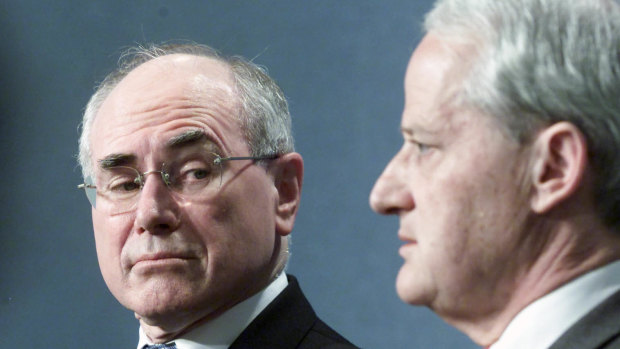
So, back to Howard’s heroic pronouncement. It’s certainly true that “we” – the federal government – decide the circumstances in which people may come to Australia. If you turn up without a visa, you’ll be turned away no matter how desperate your circumstances. If you come by boat, your chances of being let in are low.
Loading
But if you come by plane, with a visa that says you’ll be studying something at some dodgy private college when, in truth, you’re just after a job in a rich country, in you come. If we’ve known about this dodge, it’s only in the past few weeks that we’ve decided to stop it.
No, the problem is, if you take Howard’s defiant statement to mean that we control how many people come to this country, then that’s not true. We decide the kinds of people we’ll accept, but not how many.
There are no caps because, for many years, both parties have believed in taking as many suitable immigrants as possible. It’s just because the post-COVID surge in immigration – particularly overseas students – has coincided with the coming federal election that the pollies are suddenly talking about limiting student visas.
But remember, the politicians have form. Knowing many voters have reservations about immigration, they talk tough on immigration during election campaigns, but go soft once our attention has moved on, and it’s all got too hard.
It’s a similar thing with Anthony Albanese’s Future Made in Australia plan. Polling shows it’s been hugely popular with voters. But that’s because they’ve been misled by a clever slogan. It was designed to imply a return to the days when we tried to make for ourselves all the manufactured goods we needed.

John Howard and his then immigration minister Philip Ruddock at the time of the Tampa crisis in 2001.Credit: Jacky Ghossein
But, as I’ve written, deep in last month’s budget papers was the news that we’d be doing a bit of that, but not much. It’s just a great slogan.
On another matter, have you noticed Treasurer Jim Chalmers’ dissembling on how he feels our pain from the cost-of-living crisis, which is why he’s trying so hard to get inflation down?
What he doesn’t want us thinking about is that, at this stage, most of the pain people are feeling is coming not from higher prices, but from the Reserve Bank’s 4.25 percentage-point increase in interest rates.
Loading
Get it? The pain’s coming from the cure, not the disease. The rise in interest rates has been brought about by the independent central bank, not the elected government, of course. But when Chalmers boasts about achieving two successive years of budget surplus, he’s hoping you won’t realise that those surpluses are adding to the pain households are suffering, particularly from the increase in bracket creep.
And, while I’m at it, many people object to businesses raising their prices simply because they can, not because their costs have increased. This they refer to disapprovingly as “gouging”.
But few economists would use that word. Why not? Because they believe it’s right and proper for businesses to charge as much as they can get away with.
Why? Because they think it’s part of the way that market forces automatically correct a situation where the demand for some item exceeds its supply. In textbooks, it’s called “rationing by price”.
Rather than the seller allowing themselves to run out of an item, they sell what’s left to the highest bidders. What could be better than that?
The Business Briefing newsletter delivers major stories, exclusive coverage and expert opinion. Sign up to get it every weekday morning.



























